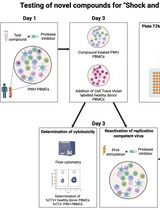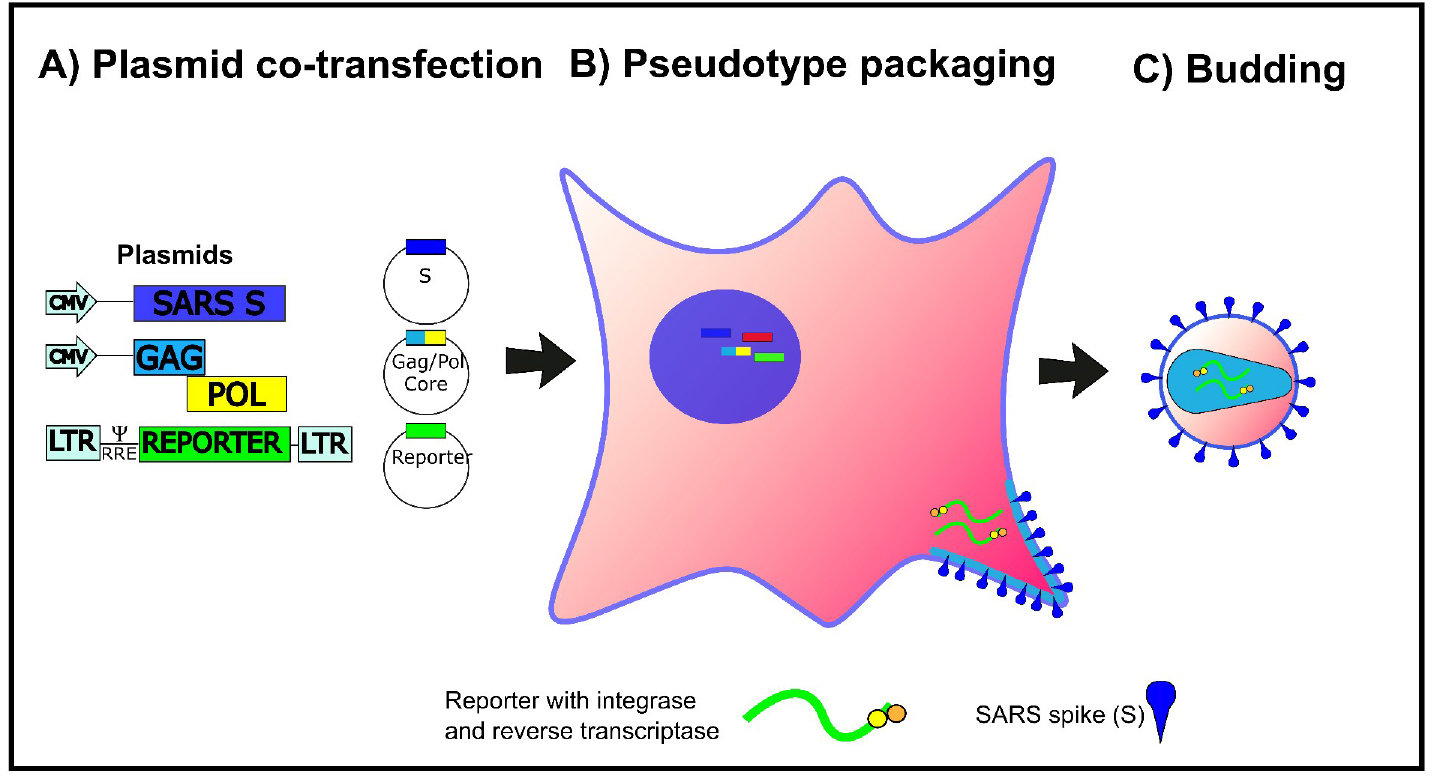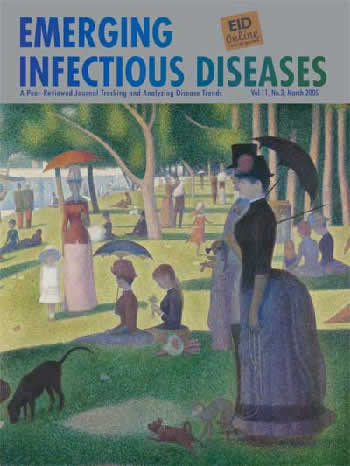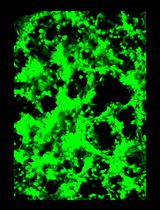- EN - English
- CN - 中文
An Optimized Method for the Production Using PEI, Titration and Neutralization of SARS-CoV Spike Luciferase Pseudotypes
利用PEI优化生产,滴定和中和SARS-CoV spike萤光素酶假病毒的方法
发布: 2017年08月20日第7卷第16期 DOI: 10.21769/BioProtoc.2514 浏览次数: 16951
评审: Longping Victor TseSmita NairDavid Paul

相关实验方案

诱导型HIV-1库削减检测(HIVRRA):用于评估外周血单个核细胞中HIV-1潜伏库清除策略毒性与效力的快速敏感方法
Jade Jansen [...] Neeltje A. Kootstra
2025年07月20日 2397 阅读
Abstract
The protocol outlined represents a cost-effective, rapid and reliable method for the generation of high-titre viral pseudotype particles with the wild-type SARS-CoV spike protein on a lentiviral vector core using the widely available transfection reagent PEI. This protocol is optimized for transfection in 6-well plates; however it can be readily scaled to different production volumes according to application. This protocol has multiple benefits including the use of readily available reagents, consistent, high pseudotype virus production Relative Luminescence Units (RLU) titres and rapid generation of novel coronavirus pseudotypes for research into strain variation, tropism and immunogenicity/sero-prevalence.
Keywords: SARS coronavirus (SARS冠状病毒)Background
The production and use of pseudotyped viral particles (PV) is widely established for many viruses, and applications in the fields of serology, surveillance and vaccine development are manifold (Temperton et al., 2015; Carnell et al., 2015). PVs have proven to be powerful tools to study the effects of viral envelope glycoprotein mutations on serological outcomes, viral tropism and immunogenicity studies especially when combined with epitope information. PVs are chimeric viral constructs in which the outer (surface) glycoprotein(s) of one virus is combined with the replication-defective viral ‘core’ of another virus. PV allow for accurate, sequence-directed, sensitive antibody neutralization assays and antiviral screening to be conducted within a low biosecurity facility and offer a safe and efficient alternative to wildtype virus use, making them exquisitely beneficial for many emerging RNA viruses of pandemic potential. Many of the published protocols require modification of the SARS spike glycoprotein and/or expensive transfection reagents (Temperton, 2009). The protocol presented here utilizes the full-length, non-codon-optimized spike protein in conjunction with the low-cost transfection reagent PEI, making this protocol widely applicable to many stakeholder laboratories. Figure 1 shows a cartoon of the lentiviral SARS-CoV PV production process directed by plasmid co-transfection.
Figure 1. Cartoon representation of the production of SARS pseudotypes. HEK293T/17 cells are transfected with three plasmids, bearing the relevant genes (Lentiviral vector, packaging construct and SARS-CoV spike expression plasmid) for the production of SARS-CoV Spike bearing lentiviral pseudotypes. This figure is modified from Carnell et al. (2015).
Materials and Reagents
- MultiGuard Barrier pipette tips 1-20 and 1-200 μl (Sorenson BioScience, catalog number: 30550T )
- NuncTM Cell-Culture Treated Multidishes (6-well) (Thermo Fisher Scientific, Thermo ScientificTM, catalog number: 140675 )
- Microcentrifuge tube Safe-Lock write-on graduated with lid latch 1.5 ml
- Sterile syringes (10 ml), Generic
- Millex-HA 0.45 µm filters (Merck, catalog number: SLHAM33SS )
- 96-well white plate (Thermo Fisher Scientific, Thermo ScientificTM, catalog number: 136101 )
- HEK 293T/17 cells (ATCC, catalog number: CRL-11268 )
- Huh7 cells (Cell Signaling Technology, catalog number: 300156 )
- Plasmids
- Glycoprotein expression plasmid: pCAGGS-SARS-CoV spike
- Lentiviral vector expressing firefly luciferase: pCSFLW
- Second-generation lentiviral packaging construct plasmid: p8.91 (expresses gag, pol and rev)
Note: Information on the plasmids above can be found in Temperton et al. (2005) and Carnell et al. (2015). Plasmids available from Viral Pseudotype Unit, University of Kent. n.temperton@kent.ac.uk - Glycoprotein expression plasmid: pCAGGS-SARS-CoV spike
- Dulbecco’s modified Eagle medium (DMEM) with GlutaMAX (Thermo Fisher Scientific, catalog number: 31966021 ) supplemented with 10% foetal bovine serum (FBS) (Pan-Biotech, catalog number: P40-37500 ) and 1% penicillin/streptomycin (P/S) (Pan Biotech, catalog number: P06-07100 )
- Gibco Reduced Serum media Opti-MEM® (Thermo Fisher Scientific, catalog number: 31985047 )
- Branched Polyethyleneimine (PEI) solution at concentration of 1 mg/ml (Sigma-Aldrich, catalog number: 408727 ).
Note: PEI is dissolved in dH2O to a concentration of 1 mg/ml and the pH is adjusted to 7 using diluted (1:3) concentrated HCl. - Phosphate-buffered saline (PBS)
- Trypsin-EDTA (0.05%), phenol red (Thermo Fisher Scientific, GibcoTM, catalog number: 25300054 )
- Positive control antibody (monoclonal/polyclonal or post-infection serum) that can neutralize the SARS pseudotype
- Bright GloTM luciferase assay system (Promega, catalog number: E2650 )
Equipment
- Class II biosafety cabinet (Thermo Fisher Scientific, Thermo ScientificTM, model: MSC-AdvantageTM )
- Water bath or incubator
- Pipettes (Gilson, model: PIPETMAN® Classic, P2 , P20 , P200 and P1000 )
- Optional: BIO-RAD TC20TM Automated Cell Counter (Bio-Rad Laboratories, catalog number: 1450102EDU )
- Plate centrifuge (ELMI, model: SkyLine CM-6MT )
- Glomax 96 luminometer (Promega, model: GloMax® 96 )
Note: This product has been discontinued.
Procedure
文章信息
版权信息
© 2017 The Authors; exclusive licensee Bio-protocol LLC.
如何引用
Carnell, G., Grehan, K., Ferrara, F., Molesti, E. and Temperton, N. (2017). An Optimized Method for the Production Using PEI, Titration and Neutralization of SARS-CoV Spike Luciferase Pseudotypes. Bio-protocol 7(16): e2514. DOI: 10.21769/BioProtoc.2514.
分类
微生物学 > 微生物-宿主相互作用 > 病毒
微生物学 > 微生物-宿主相互作用 > 假病毒
生物化学 > 蛋白质 > 合成
您对这篇实验方法有问题吗?
在此处发布您的问题,我们将邀请本文作者来回答。同时,我们会将您的问题发布到Bio-protocol Exchange,以便寻求社区成员的帮助。
Share
Bluesky
X
Copy link











